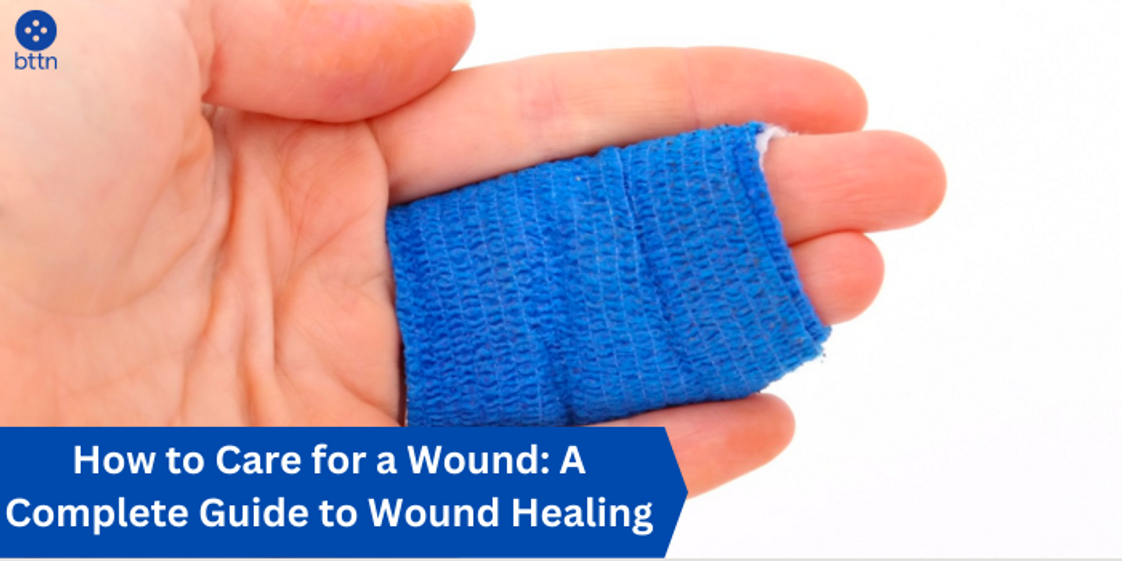
How to Care for a Wound: A Complete Guide to Wound Healing
Posted by Pankaj Dhiman on Feb 18th 2025
In our fast-paced lives, it's easy to overlook the significance of even the smallest injuries, such as cuts and bruises. However, our body's remarkable ability to heal itself should never be underestimated. Welcome to the ultimate guide on understanding wounds, their healing process, and how to provide optimal wound care in 2025.
What is a Wound?
A wound is essentially any disruption in the integrity of the skin, ranging from minor cuts and scrapes to more severe injuries like punctures, burns, and surgical incisions. Wounds are not only a gateway for infections but can also lead to scarring if not treated properly. Understanding the type and severity of a wound is the first step in effective wound care.
Wound Care: Step-by-Step Guide
Step 1: Initial First Aid
The first step in wound care happens immediately after the injury occurs. Regardless of the wound's severity, it's crucial to clean the wound gently but thoroughly with mild soap and water. This helps remove debris, bacteria, and any foreign particles that may lead to infection. After cleaning, pat the wound dry with a clean, sterile cloth.
Must Read: 9 Different Types of Wound Care Dressings and Their Uses
Step 2: Assessing the Wound
Assessing the wound's depth, size, and severity is paramount. Superficial wounds like small cuts and scrapes usually heal on their own with basic care. However, deeper wounds, such as punctures or cuts with jagged edges, might require medical attention. If you notice signs of infection like redness, swelling, warmth, or discharge, consult a healthcare professional promptly.
Step 3: Choosing the Right Dressing
Selecting the appropriate dressing for a wound can significantly influence its healing process. In recent years, advanced wound dressings have gained popularity. Hydrocolloid and hydrogel dressings create a moist environment that fosters faster healing and minimizes scarring. Silicone-based dressings are also excellent for reducing scar formation.
Step 4: Keep it Clean, Keep it Covered
Regular cleaning and changing of dressings are essential for preventing infections. Wash your hands thoroughly before touching the wound or changing dressings. Apply any prescribed ointments as per your healthcare provider's instructions. Covering the wound with a sterile bandage not only prevents contamination but also protects it from friction and further injury.
Must Read: Open Wound: Types, Treatments, and Complications
How Does My Wound Heal?
Understanding the wound healing process can provide insight into how to take care of it properly.
1. Hemostasis Phase
As soon as a wound occurs, the body initiates the hemostasis phase to stop bleeding. Platelets form a clot, sealing the wound temporarily. This is why immediate pressure and elevation are crucial for controlling bleeding.
2. Inflammatory Phase
The body's natural defense mechanism kicks in, leading to redness, swelling, and heat around the wound. Immune cells work to ward off infection and remove debris. Inflammation is a vital part of the healing process, but excessive inflammation can slow down healing.
3. Proliferative Phase
During this phase, the wound begins to rebuild. New blood vessels form, and collagen, the building block of skin, is produced. This phase can last for weeks, and it's essential to provide your body with proper nutrition during this time to facilitate healing.
4. Maturation Phase
In the final phase, the wound continues to strengthen and contract. Collagen remodels, and the wound gradually becomes smoother and less noticeable. This phase can extend over a year, and protecting the wound from excessive sunlight during this period can help prevent excessive scarring.
How Do I Treat It?
1. Nutrition and Hydration
A balanced diet rich in vitamins, minerals, and protein is crucial for wound healing. Vitamin C aids in collagen production, zinc supports the immune system, and protein provides the necessary building blocks for tissue repair.
2. Stay Active
Engaging in light physical activity improves blood circulation, which is vital for delivering nutrients and oxygen to the wound site. However, avoid intense exercises that might strain the healing area.
3. Avoid Tobacco and Alcohol
Smoking delays wound healing by constricting blood vessels and reducing oxygen supply. Excessive alcohol consumption can also interfere with the healing process. Quitting smoking and moderating alcohol intake can significantly aid wound healing.
4. Stay Hydrated
Adequate hydration supports the body's natural healing mechanisms. Water helps transport essential nutrients to the wound site and removes waste products efficiently.
5. Consult a Healthcare Professional
If you're unsure about the severity of your wound or notice any signs of infection, it's best to consult a healthcare professional. They can provide tailored advice and recommend treatments that suit your specific situation.
Must Read: Balanced Diet: Definition, Importance, Benefits & Diet Chart
Conclusion
In a world that's constantly evolving, some things remain steadfast – our body's innate ability to heal itself is one of them. Proper wound care is a blend of science, common sense, and self-care. By following these step-by-step guidelines and understanding the phases of wound healing, you're well-equipped to take charge of your healing journey. Remember, investing time and effort into caring for your wounds today can ensure a healthier, scar-free tomorrow.
